How to Wear A Shemagh: What You Need to Know About It
Until recently, women were among the few that knew about the existence, the practicality and versatility of a scarf. They knew they should have many of them in their wardrobe, to match their outfits; they knew how to improvise new clothing out of it, like skirts and dresses; they knew how to handle it whether at a fancy dinner or at the beach.
But ladies, it’s now men’s turn to wear the shemagh. And this is no fashionable accessory to make them more appealing for the wolves in the wilderness, but a tactical scarf that recently became a must-have piece of equipment. As this is no ordinary piece of textile, one should learn how to wear a shemagh.
[the_ad_group id=”21″]
The shemagh has been a traditional cloth that Arabs have been using for centuries, men as well as women, as hair dress. It is a quintessential symbol for Palestinians, honoring their fight for independence; they call it keffiyeh and make it from wool or cotton dying it in orange, white or black.
It’s called shemagh by Saudi Arabians and Jordanians that make it from cotton but also flax and either keep it simple in a black and white check pattern, either decorate it in vivid colors. The Arabs in western Iraq and the Persian Gulf call it ghutrah and the dwellers of North Africa and Egypt, rezza.
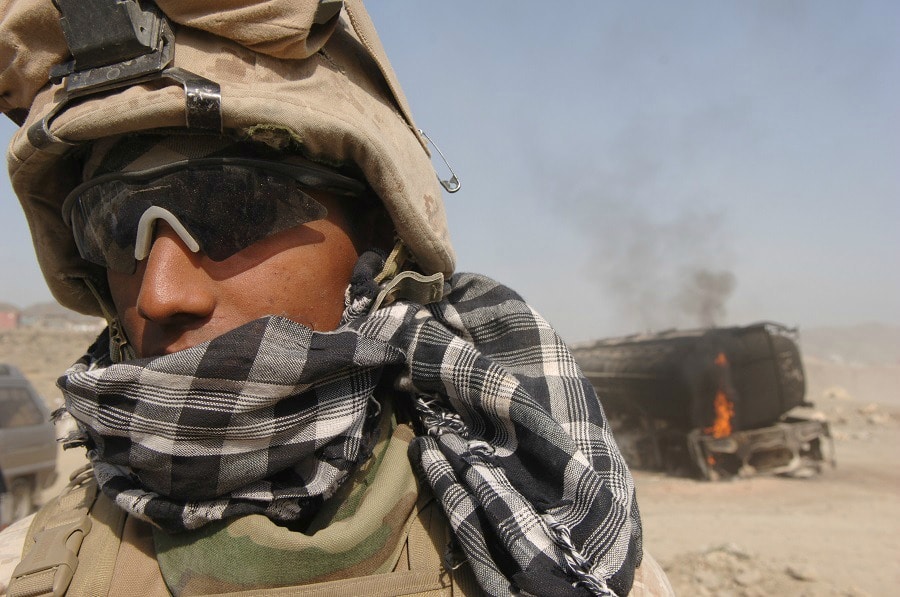
Its primary purpose was to protect them against desert weather conditions, extreme exposure to sunlight and powerful dust winds, which makes it appropriate for its native lands. Proof enough of its effectiveness is the fact that it remains as a cultural stamp of Arab people, that wear it also as a statement wherever they are on Earth.
We might think that the keffiyeh made its way into the worldwide consumer market as other traditional items, indigenous to certain cultures, that were transferred, transformed and integrated throughout the world in the process of globalization. And it might be possible, that it entered the westerners’ consciousness through fashion as another style of the otherwise well-known scarf.
But most probably it’s journey was another one – as in World War II, the British army introduced the shemagh tactical scarf as a standard piece of equipment for its soldiers. Since then, it became irreplaceable and now the USA is providing its own with keffiyeh.
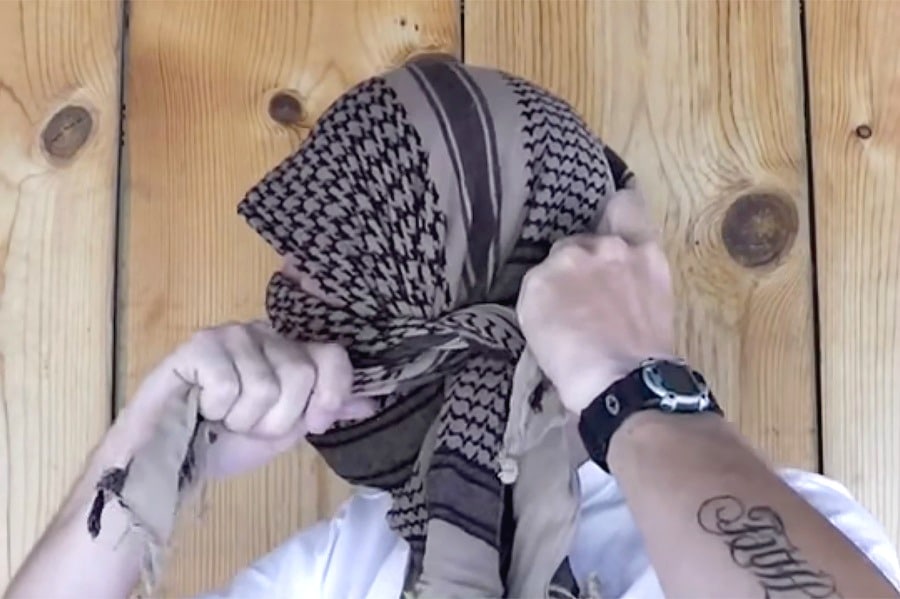
As we have a great variety of products, either technology, special materials or even more simple items, that have been first produced for military use, only to receive their one niche on the market afterward – we cannot help thinking that this is the current course also.
And it is very interesting that the shemagh is premiering and hitting the western market at a moment when the west is fighting its original wearers on their own land. But, after all, the versatility of this utterly simple cloth is what made it a star, to begin with.
The tactical shemagh that you can buy today is still manufactured from woven cotton. It’s pretty heavy, but this makes it also thick enough for protection. And its standard measures are 42×42 inches.
How to Wear A Shemagh
It’s not like I’m going to give you any suggestion like how to keep one end of the scarf hanging loosely lower and the other negligently flinging over your neck, as to give the impression of an impromptu pop up into the wild woods. Don’t, worry, we’re still in tactical survival area.
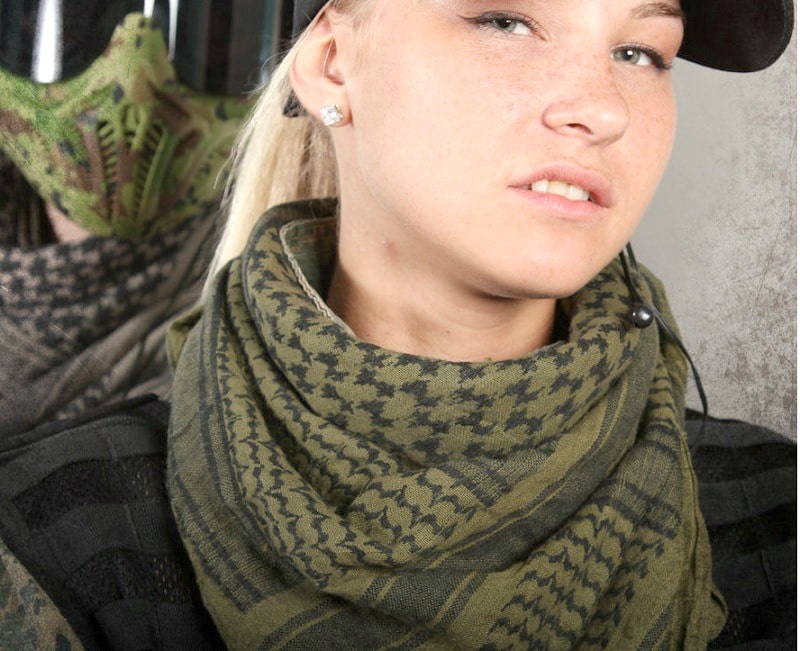
So in case you lose your minds when the wind comes swirling your shemagh around your head (or to prevent such an event for that matter) here are a few tips on how to wrap it well:
- First of all, whichever way you plan to wrap it – when you’re done, tie the two heads of the scarf or secure their position. This way you won’t lose it in the wind but you will keep it as a protective shield.
- You can wear it as neck wrap loose or tight, but it’s also broad enough to cover your shoulders and chest area which is also exposed when it comes to wind or sun waves.
- You can hide your head behind a special shemagh wrap resembling a ninja warrior mask (you will find out how to do it yourself in a step-by-step guide at the end of the article) precisely conveyed to efficiently protect all your vulnerable areas in the case of a blinding sandstorm. Or, if the weather allows you to breathe freely but the sun keeps pounding the top of your head – you can uncover your face and let it hang around your neck.
- If it’s one of those chilly nights, camping after a long day of walking and climbing, that moment when you finally rest by the fire, you can lower your scarf and let it wrap around your shoulders like a cushy small blanket. And then you can get it even lower, just enough to warmly cover your back muscles, that have been put to challenge carrying the backpack the entire trip. You can even help the feeling a little bit, by turning your back to the fire and let the soothing warmth be absorbed and stored in the fabric, that will slowly release it afterward, calming your tensed body.
- You can even strap it your head with a ribbon and the rest of it fly around you freely like a mantle.
But whatever ingenious wrap you find yourself improvising with the shemagh, along with the upper mentioned, remember that its original destination was utterly practical and ultimately symbolical.
[the_ad_group id=”22″]
So when you wear a shemagh you should do it being aware of its potential, the many ways in which it can support you through your journeys, as well as its collectively infused cultural meaning. Either perpetuated or distorted, the shemagh has undergone such a formidable journey itself, a transition through cults and customs into the free open market so one can say nowadays that you do not wear a shemagh but that the shemagh wears you.
How to Use A Shemagh
This plain square of fabric has a virtually large number of possibilities in which it can be used in the wilderness. And this thanks to its perfect simplicity and to human creativity, wide awake when in need.
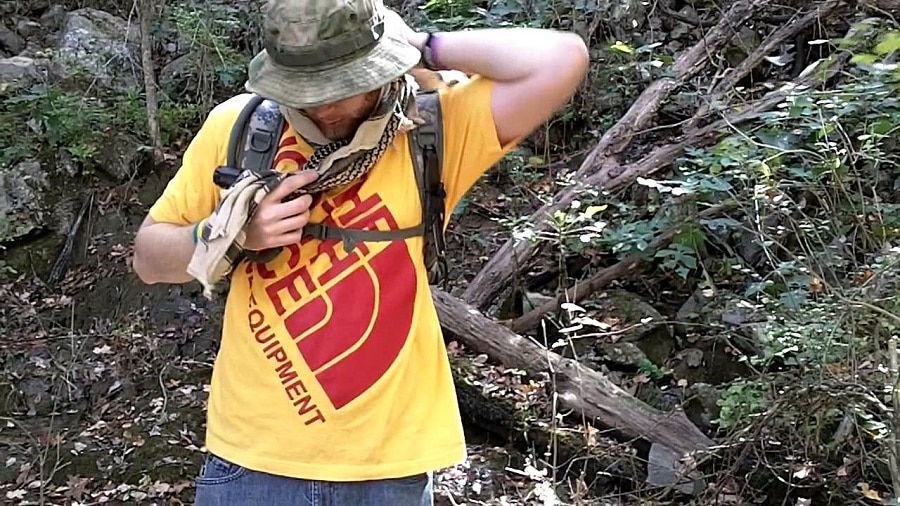
We will go through a number of situations when the shemagh can prove itself, not only useful but sometimes a truly life-saving gear:
- The most common sense utility is for the protection of your head, face, and neck against sand, dust, or other particles carried by the wind – it can be wrapped around your head, placed on your face or neck, it can stay fixed or you can tie it up more loosely.
The best thing is that it’s big enough to cover every inch of skin (except your eyes of course) and thick enough to filtrate small particles of sand and dust; - Following-up, it can serve as protection from warm as well as cold weather – it hides your head and face from the powerful noon sun and it can keep you comfortable in cold drafts. If the weather turns even cooler, it can be used under a hat or hood of some sort as an extra isolation layer.
Though of course it’s not meant to resist freezing temperatures, do remember that it was originally used in the cold desert nights, so it is thick enough to be used as face veil in the case of a snowstorm that catches you unprepared; - The shemagh can play the role of a towel when lacking one and it can also be used to cool you down – it can be soaked in water and placed over your head.
This is a really efficient method in those infernally torrid summer days when you feel like walking in a desert landscape even if among trees. It also comes handy as a sweat rag. - You can improvise a sunshade out of a keffiyeh – with the use of four sticks fixed in the ground (you can also tie it from small trees if they’re thin and close enough to each other). Its dimensions are generous and so is its shade.
- You will be thankful for having this tactical gear with you, in the unfortunate case of an injury – if it’s a small bruise, you can tear up a strip from your scarf and wrap it around the wounded area. Don’t need to think twice if it’s worth the sacrifice of your precious shemagh, as this bandage can prevent the risk of infection. Check out our experts advice on how to treat an infected wound, see our earlier article on this topic.
If it’s a more serious situation as a bleeding wound, you can use it as a tourniquet and tie it so as to constrict and stop the bleeding.
In the case of a shoulder or arm injury, it can be wrapped around your neck and arm, holding it fix and furthering the healing process. If you twist your ankle or suffer any other type of minor fracture, the keffiyeh can be tied around along with a piece of wood, a strong stick or another thing to keep it locked tight. - Another essential function that was envisioned in its original desert landscape, one that comes as a necessity in that realms, is the filtering of dirty water. And though it doesn’t safeguard you from bacteria or other harmful microorganisms, it does keep away the mud, sand, vegetation, small chunks of wood and even frog tadpoles. To give you more ideas on how to make a water filter for survival, check out our must-read article on this topic.
To be safe, you’ll have to boil the water afterward and this will prompt the elimination of any pathogen.
It can also be helpful in the process of collecting water rain or even dew, as it can act as a huge funnel – tying its corners to four sticks so as to keep the middle of the scarf as low as possible and placing a bucket or another container underneath it.
You can also put a rock inside so it will keep it in position even if the wind blows (just be careful not to use a heavy rock or else your whole installation may crumble and fall under its weight); - Ever happened to you to repack all your gear after camping and discover that what previously found its place among the rest so as to perfectly fit in, is now laying around your backpack that is mouth filled with no extra room?
It’s like this recurrent dream, an inexplicable situation when familiar objects suddenly grew out proportions, covering much more volume than when first packed. And it almost always ends up with you taking everything out of your backpack and replacing it carefully.
Well, now you have your shemagh that can be improvised into a pouch and take care of the “extra” luggage, as well as fruits, mushrooms or other goodies you find along your way ; - When in the wilderness, you may end up in a life or death situation when anything that can be improvised into a weapon to serve as a defense or for hunting, is of immense help. So here’s how this common bandana can be transformed into an efficient piece of armament: the simplest way is to place a rock in the middle of it and twist the ends around, then grab its ends and swing it.
Something a bit more elaborate can be created by twisting the shemagh, each end in an opposite direction in order to remodel it into a thin strong tie with a pouch in the middle.
A rock is placed in the pouch and you’re ready to blow this shepherd’s sling, although it takes some practice to learn how to properly use this device. The technique is to grab its two ends and swing it, and when you’re ready to throw just let go of one end and the rock will hopefully fly into your target. Otherwise, the shemagh can make a pretty good fishing net; - The keffiyeh can be made into a solid piece of rope whenever you need to secure gear, or your tent, by tying it to a tree – this is done by twisting the scarf;
- If you find yourself secluded and forced to spend the night in the wilderness, you’d be so grateful that the Arabs invented the keffiyeh – you can use it as a blanket for cover or to sleep on, you can compress into a pillow, it can even protect you against insects. See our tips on how to stay warm during cold nights when camping to learn more.
These are only a few of the more elementary ways in which the shemagh can become a functional and irreplaceable item from your own gear.
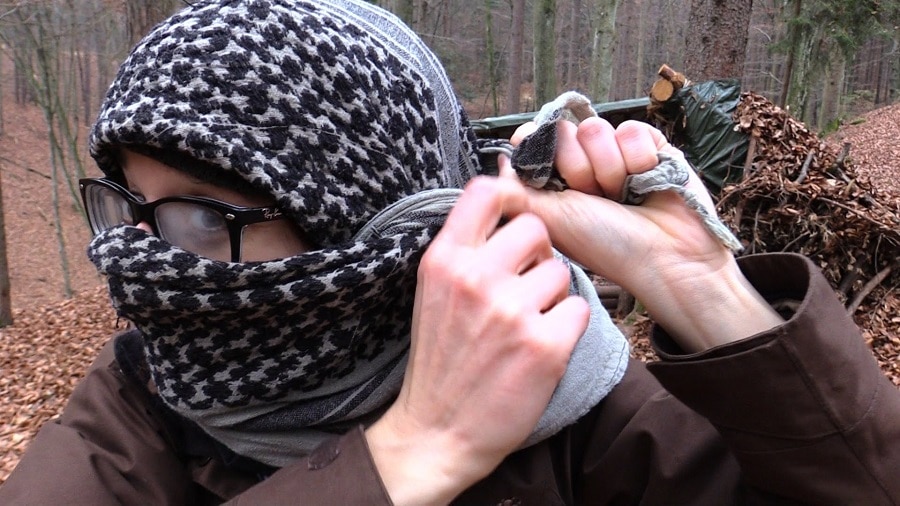
It is practically so easy to be creative with it, that ideas of its usage just come popping into your mind, needless to say, that when the necessity truly comes, the adequate applicable techniques will appear as well.
How to Tie A Keffiyeh
There are so many ways to tie the keffiyeh, each according to the specific utility. If you feel uninspired just ask a lady friend and she’ll show you a dozen of methods in ten minutes time. What we’ll present here is the traditional scheme that creates a full head and face cover-up.
So here are the few steps:
- Fold it in two, corner to corner so as to form a large triangle
- Place it on your head, keeping the corners in each of your hands, the overlapped ones hanging on your back and letting one side slightly longer than the other one
- The short part goes under your chin, the longer one is wrapped across your face, covering your mouth and nose. The corner of the shorter one is kept above the wrap of the other so as to be fixed
- Pull the corners behind your head and tie them up. Pull forcefully so the whole installation is secure. The knot should be behind your ear.
- The keffiyeh should be now safe on your head. If there are any remaining parts that you feel are hanging around too loose, then fold them underneath the tied wrap.
It’s always refreshing when you stumble upon versatile products that can be useful in so numerous ways, that they can actually eliminate a whole series of objects from your gear. It’s almost like a bliss for all travelers that can rightfully appreciate a light luggage and the satisfaction of using the same thing for multiple choruses.
https://www.youtube.com/watch?v=U6nPBrS-nYU
Apparently, the real necessity of people in the past has become the trend of the moment. And amidst the extreme consumerist hype that keeps producing endlessly, never minding the actual needs of its consumers, the release on the market of products like the shemagh is quite an interesting paradox.
[the_ad_group id=”23″]
Moreover, the culture frame that constituted the inspiration for this product is one that most likely produces anxiety in this historical moment. So borrowing bits of its innate knowledge and wisdom and integrating it, not only in the western lifestyle, but also as a global mass trend, can be a step towards a mutual cultural understanding.
So, when wearing a shemagh, a keffiyeh, a gutrah or a rezza, one carries with him the whole complex historical bundle of inter-cultural exchange as well as appropriation – one so complicated entanglement that in the end is reduced to trend and practicality.

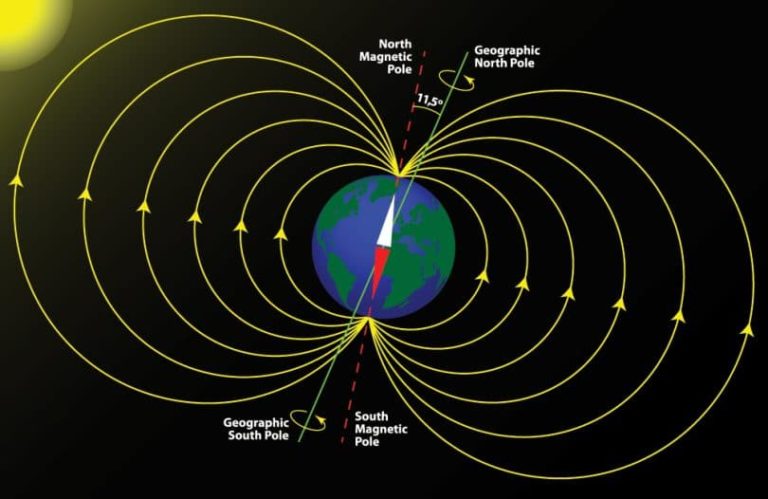


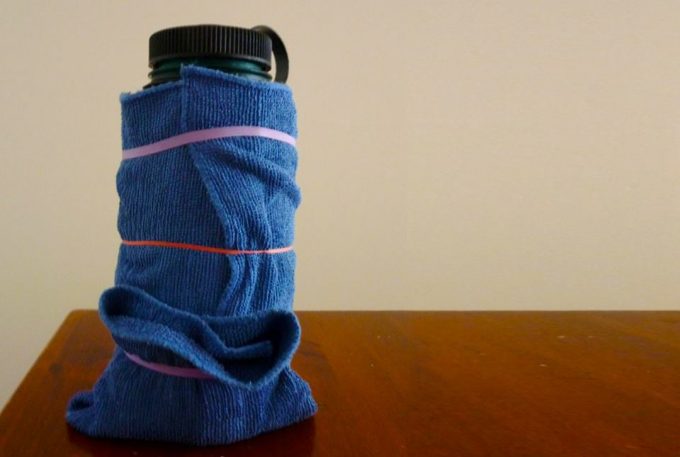

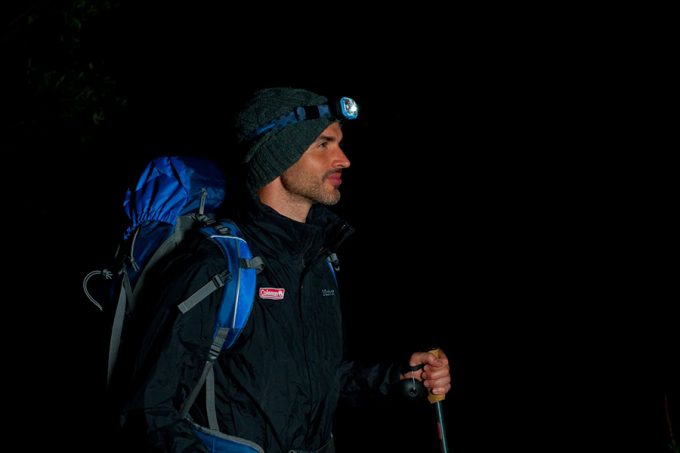
For some years I worried about the political and cultural implications of wearing a keffiyeh, although I could see their versatility and utility, I didn’t want to offend anyone by wearing one.
One evening when traveling through Jordan, I got to talking to a group of young Palestinians, and after a lengthy conversation about my concerns surrounding westerners wearing them, they assured me that most Palestinians wouldn’t be offended by me wearing one, particularly since I had an understanding of what they truly represent.
Before leaving Jordan, one of the young men I’d met earlier in my trip was kind enough to give me his, and I’ve worn it everywhere I have traveled since.
They serve countless functions, are comfortable and they look good too, what’s not to love about them. What’s more, all the Palestinian people I’ve met since tend to comment (in a positive way), leading to some very interesting conversations.
One small piece of advice, if you’re planning to wear one, either stick to neutral colors or go full on traditional (ensure you have the right pattern etc), avoid those adapted to be fashion accessories.
I couldn’t agree with you more. When traveling it is important to keep in mind a few important facts about the shemagh, particularly when traveling in the middle east. Each color, pattern and even the way in which you wear them will have some form of cultural significance to a number of groups and nations, these can be both positive associations and negative, so wearing the wrong color the wrong way could potentially land you in hot water.
As the commenter above noted, don’t wear these as fashion accessories, please don’t be a hipster wearing them just because you think they look good or cool.
Be educated about their history, show respect to the shemagh itself and the groups and cultures who have strong historical associations with them.
Do your homework before traveling, check to see if the area you are traveling to has any associations or history tied to the shemagh.
These are strong yet true words, Rob. A lot of travelers nowadays use a shemagh as an accessory or fashion statement without understanding its real purpose. It looks cool, but it is more than just a versatile clothing artlcle.
I wish people would think this way about the t-shirt. It is a powerful symbol of my religion and I am always offended that people wear it as a fashion thing.
I understand your point. Sometimes people feel to be with the “in crowd” that they forget what they are doing can probably be a misappropriation. I think what is best is to educate them.
For some years I worried about the political and cultural implications of wearing a keffiyeh, although I could see their versatility and utility, I didn’t want to offend anyone by wearing one.
One evening when traveling through Jordan, I got to talking to a group of young Palestinians, and after a lengthy conversation about my concerns surrounding westerners wearing them, they assured me that most Palestinians wouldn’t be offended by me wearing one, particularly since I had an understanding of what they truly represent.
Before leaving Jordan, one of the young men I’d met earlier in my trip was kind enough to give me his, and I’ve worn it everywhere I have traveled since.
They serve countless functions, are comfortable and they look good too, what’s not to love about them. What’s more, all the Palestinian people I’ve met since tend to comment (in a positive way), leading to some very interesting conversations.
One small piece of advice, if you’re planning to wear one, either stick to neutral colors or go full on traditional (ensure you have the right pattern etc), avoid those adapted to be fashion accessories.
I couldn’t agree with you more. When traveling it is important to keep in mind a few important facts about the shemagh, particularly when traveling in the middle east. Each color, pattern and even the way in which you wear them will have some form of cultural significance to a number of groups and nations, these can be both positive associations and negative, so wearing the wrong color the wrong way could potentially land you in hot water.
As the commenter above noted, don’t wear these as fashion accessories, please don’t be a hipster wearing them just because you think they look good or cool.
Be educated about their history, show respect to the shemagh itself and the groups and cultures who have strong historical associations with them.
Do your homework before traveling, check to see if the area you are traveling to has any associations or history tied to the shemagh.
These are strong yet true words, Rob. A lot of travelers nowadays use a shemagh as an accessory or fashion statement without understanding its real purpose. It looks cool, but it is more than just a versatile clothing artlcle.
I wish people would think this way about the t-shirt. It is a powerful symbol of my religion and I am always offended that people wear it as a fashion thing.
I understand your point. Sometimes people feel to be with the “in crowd” that they forget what they are doing can probably be a misappropriation. I think what is best is to educate them.